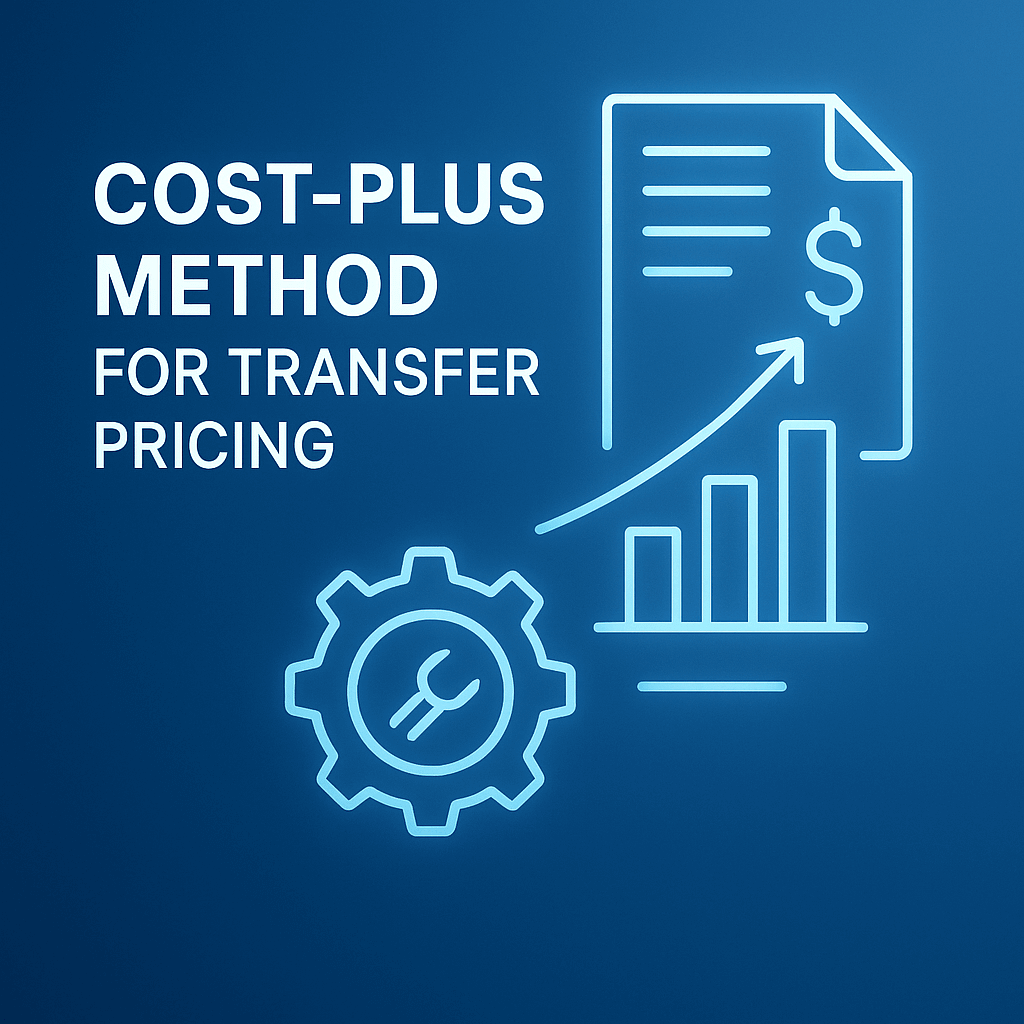Transfer pricing in Israel
What are transfer prices between related parties?
“Transfer pricing” refers to the prices at which transactions occur between related parties in the context of international tax. When a business activity controlled by the same owners includes transactions across different countries, the question arises as to how much of the profits should be attributed to each of the involved countries.
Changes in the policies of information exchange between the countries in the world make transfer pricing a topic that is the central of international business activity and almost every international tax planning effort. Ignoring transfer pricing in international tax planning risks the planning and may result in high tax payments in the future, which in certain cases may not be refundable.
An example of a transfer pricing issue is an Israeli company with an idea for a product that develops the product through a development team located in Cyprus, which is employed by a Cypriot subsidiary, and then sells the product to the US through a subsidiary in California for $100. Assuming that development costs in Cyprus are 20% and marketing costs in the US are 10%, where does each part of the profit accrue, and how much tax will the group be required to pay in Cyprus, the US, and Israel? Each country will claim that most of the profit was generated there. Cyprus will claim that the programmers in Cyprus provided the most value to the product, the Israeli tax authority will claim that without the idea, there would be no value to the programmers in Cyprus, and the IRS in the US will claim that without marketing and the American market, there would be no economic viability for the product. To maximize group profits, group owners will of course want to report most of the profit in the country with the lowest tax (in our case, probably Cyprus or, assuming the parent company is under the Israeli investment encouragement law, Israel).
Our transfer pricing department is managed by Avital Kaminsky and by economists with experience in negotiating with the tax authority (both as former tax authority employees and within the firm) and in collaboration with transfer pricing experts who have many years of experience in transfer pricing in many countries around the world. The amount of transfer pricing studies that we do, allows us to reach much more competitive prices in the market. An additional advantage is that each of our transfer pricing studies is conducted in consultation with an international tax expert and with our advisors in the relevant countries. Therefore, the study combines not only economic considerations but also accounting and legal knowledge and extensive experience with the tax authority.
Our firm has conducted transfer pricing studies for multinational groups, risk capital funds, public and private companies, real estate funds, and more.
How to choose a transfer pricing firm? In order to know how to decide which transfer pricing firm to choose, there are several basic questions that must be asked:
What do I get? Is the Transfer Pricing study a full study or a benchmarking study?
The high prices in the market have led to a situation in which sometimes offices provide a benchmark report instead of a full transfer pricing study. This does not comply with the provisions of the law and therefore such a situation will lead to two undesirable results: in the first stage, it is not possible to declare that there is a transfer pricing study – and thus the tax authority’s computer system flags the case for audit. In the second stage, during the audit – a full transfer price study will be required, which will try to support the retroactive data.
In such cases, a transfer pricing study will cost more, and its reliability will be lower. In conclusion – it is necessary to demand a transfer pricing study that complies with Section 85a of the Israeli Tax Ordinance (and the relevant section in the domestic law of the other relevant countries, for example in the US: U.S. Code Sec. 482).
In order to compare correctly – it is necessary to understand that we are dealing with “apples to apples”.
Does the price include the transfer pricing study or does it also cover full representation before the tax authority?
In most cases, the price only includes the study itself, and when the company needs assistance in dealing with the tax assessor or assistance from a CPA in implementing the transfer pricing study, it usually incurs an additional cost, which is usually not cheap. This question is the type of question that should be asked at the beginning of the process!
If representation is required in front of the tax authority, who represents the company?
Choosing someone who has seniority and experience in dealing with the tax authority to represent the company is significantly preferable. This person should have personally managed similar cases in the tax authority and be familiar with the way they operate, as well as personally know the staff in the transfer pricing department and the department managers.
Which databases does the researcher use?
The subscription fees for databases used for transfer pricing research are very expensive and can cost tens of thousands of dollars. The most common databases used are:
- Bloomberg Tax – the oldest and most expensive database with reliable and well-established data. Many tax authorities rely only on this database for most of their comparative analysis transactions.
- Amadeus – a European database mainly used for pricing specific transactions such as interest rates.
- S&P database – mainly used for work in the US, and in some European countries, it is not recognized as a reliable source of information.
- Orbis database by Bureau van Dijk.
- Checkpoint database by Thomson Reuters is also used.
- Inner country Databases.
Subscriptions to these databases are expensive. For example, a subscription to Bloomberg and Amadeus which are used for most of the firm’s transfer pricing work costs around 200,000 ILS per year. Most firms with a small volume of transfer pricing works are subscribed to only one database. Sometimes firms are not subscribed to the database but pay per use. The more databases a firm is subscribed to, the easier it is to justify its position we want to represent to the client.
The big 4 international accounting firms conduct many searches, so they have developed internal databases to save money:
- PwC’s TP Intelligence database
- EY’s TP Navigator database
- Deloitte’s TP Central database
- KPMG’s TP Insights database.
The alternative databases of the big 4 contain fewer comparison companies, and the search results are often not detailed enough, making it difficult to prove the comparison companies. In many countries around the world, the big 4 also work with Bloomberg and Amadeus databases and do not rely on their own databases. Our firm’s transfer pricing work is based on databases such as Bloomberg, Amadeus, and other databases as needed.
What supporting evidence would be included in the transfer pricing study?
Including complete outputs from the databases used in the research is crucial in order to support the comparisons made and validate the conclusions. A transfer pricing study without supporting evidence will lack true validity for tax purposes and will be easily challenged and attacked. Transfer pricing studies usually consist of approximately 100 to 200 pages, with the majority being annexes that “prove” the position taken.
How much does a transfer pricing study cost?
A transfer pricing study should not be expensive! The cost of a transfer pricing study depends on several parameters:
- Databases – the more databases the firm uses and the more expensive they are, the more it will be reflected in the final price of the work. Surprisingly, even large international firms save on this important issue, which is the basis for transfer pricing studies.
- Assessment discussions support – Does the price include the assessment discussion support and if so, is the support limited (for example, until one discussion, a certain number of hours, etc.)?
- Representation before the tax authority – who will represent the company before the tax authority? How much experience and skills do they have?
- Quality and scope of the work – due to the importance and implications of transfer pricing for tax authorities (both in Israel and in other relevant countries), the work should be impressive, comprehensive, and convincing.
- The number and type of transactions being examined should also be considered.
- How many countries are involved in the transactions? The more countries involved, the higher the price, as sometimes there is a need to understand local law as well.
In the end, the cost of a transfer pricing study can vary widely and can be attributed to three payment options. The basis is a payment for three years:
Route One – “Regular”: Payment for the transfer pricing study, and two additional small payments (about 15% of the study price) for updates each additional year.
Route Two – “All Inclusive”: Monthly retainer that includes not only transfer pricing studies and updates, but also full representation before the tax authorities in the field of transfer pricing without limitations and consultation in this field. In this route, there is no initial payment for the study, but the cost is reflected in the monthly fee.
Route Three – “Combined”: Initial payment for the transfer pricing work, followed by a low monthly retainer that includes full protection and annual updates.
After reviewing these key questions, you will discover that our firm stands up to any competition, both in terms of price and in terms of the professional quality of the work and responsibility for the outcome.
Transfer pricing study validity
The OECD guidelines allow for the use of the same database search results for three years, given that the circumstances of the transaction and economic conditions remain the same.
However, in Israel, the validity of a transfer pricing study is a bit different. If a taxpayer has international transactions with related parties, they must submit Form 1385 as an annex to their annual tax return.
In Form 1385 the taxpayers need to declare whether they have a TP study as of the date of the report submission. This creates a de facto annual update requirement, which is not practical for taxpayers.
Our usual approach is to have an annual meeting with the client to confirm whether the underlying circumstances (market, intercompany transactions, profitability, etc.) remain unchanged. If the circumstances haven’t changed, we issue a memo confirming our review and its results. In the memo, we also advise the client to use the same TP study for the year in question. After three years, the client needs to have an updated TP study, with an updated database search, among other things.
The price of the mentioned annual review and memo for the second and third years is usually about 5%-10% of the price of the full study.
Methodology and regulation of transfer pricing in Israel
In international transactions, the legislation regarding transfer pricing in Israel is framed by Section 85a of the Income Tax Ordinance and regulations that have been enacted under it. The Israeli regulations are mainly based on OECD guidelines and require, among other things, documentation of transfer pricing.
Additionally, following the enactment of these regulations, a Transfer Pricing Unit was established in the Israeli tax authorities to oversee the implementation and enforcement of the regulations. In September 2014 and later in October 2015, the OECD published fifteen action items with specific recommendations as part of the Base Erosion and Profit Shifting (BEPS) project. The OECD recommendations are expected to have far-reaching effects on tax planning in general and transfer pricing in particular, both in Israel and worldwide, in the coming years.
Methodologies in the use of transfer prices in Israel
Section 85a of the Income Tax Ordinance Israel mainly adapted the OECD guidelines, with one notable difference. Several commonly used global methods are employed to determine the appropriate price range for controlled transactions. The customary law in the world dictates that the result of a transaction between related parties, which claims to be executed at market price, must be determined based on the most appropriate method, given the economic facts and consequences of the transaction. The selection of the chosen method is of immense importance and affects the activities of the involved companies, among other things because, from the perspective of tax authorities, it indicates the “true” nature of the transaction (in addition to the actual nature of the transaction). Here is a brief overview of some of the existing methods for determining and implementing transfer pricing.
Comparable Uncontrolled Price Method (CUP)
This method compares the prices charged between related companies and prices between unrelated companies (third parties) when performing the same transaction (or if there are only minor differences between parallel transactions). The CUP method represents a major gap between Section 85a of the Israeli Income Tax Ordinance and OECD guidelines. Section 85a adopts the “most appropriate method” approach and explicitly states that if the CUP method can be applied reliably, then it is automatically considered the most appropriate method and another transfer pricing methodology cannot be used for a controlled transaction.
Resale price method
This method examines whether the amount charged in a transaction between related companies is at arm’s length by examining gross margins compared to the same margin achieved in transactions with unrelated parties. This method is particularly useful for testing distributors who sell a manufacturer’s product, for example, without changing the product or adding any significant value to it.
Cost-plus method
The cost-plus method measures the market price by adding a reasonable gross profit margin to the cost of production (or service) in the transaction being examined between related parties. This method is generally used to determine the remuneration that the manufacturer (or service provider) is entitled to earn in addition to the cost of producing the product or providing the service when he is working in his own related company.
Profit-split methods
These methods allocate profits (or losses) accumulated in related transactions by defining the relative contribution of each party to the profit generated. This contribution must be determined, among other things, in a way that reflects the functions performed, the risks assumed, the resources employed, and the costs incurred by each party to the related transaction.
Transactional net margin method (TNMM) or comparable profits method (CPM)
This Transactional Net Margin Method evaluates whether the amount paid in a related transaction is at arm’s length by comparing the profit earned by one of the parties to the related transaction (“the tested party”) to the profit earned by third parties performing similar transactions, having similar roles and assuming similar risks.
Other methods – Similarly to The US’ IRC 482, section 85A of the Israeli Income Tax Ordinance states that additional transfer pricing methods can only be applied if all five mentioned above methods were examined and none of them was able to reliably measure the arm’s length of the tested controlled transaction. The alternative method can be applied only if it can reliably reflect the result of the arm’s length range for the tested controlled transaction.
Transfer pricing – not only for tax authorities!
The transfer pricing treatment was originally intended to demonstrate to tax authorities that companies are conducting their inter-company transactions using market prices, but proper attention to transfer pricing may also provide a management opportunity to examine the group’s activities in an accurate and calculated manner. The required documentation for tax authorities includes, among other things, a description of the company’s products, its mode of operation, the markets in which it operates, and a legal-economic analysis of the transfer prices used by the company. This is a comprehensive study of the company’s operations that may indicate the operational efficiency of the company. For example, one of the results of preparing the appropriate documentation may indicate that the payment transferred to a subsidiary exceeds the norm in the market in which the company operates. Analysis of this result may indicate, for example, incorrect profit margins, incorrect operation, the need to examine the way in which employees are employed, and more.
The preparation of the appropriate documentation is also examined through the pricing of inter-company transactions. The current method that is being used may not meet the requirements of tax authorities (for example, the cost-plus method may not be suitable). Furthermore, the current path may not be economically correct. A comprehensive examination of the company’s actions by economic-legal experts can lead not only to a change in pricing methods but also to optimization. The issue of transfer pricing requires professional attention. In addition to economists, accountants, lawyers, and tax consultants can also greatly assist in understanding the issue and its proper implementation. Nimrod Yaron & co., Firm offers professional assistance in the field of transfer pricing.










